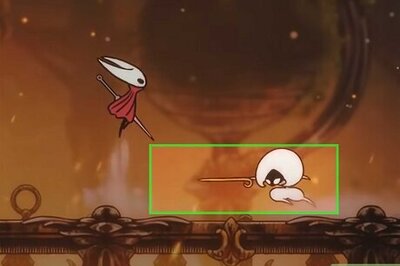
views
On February 27, 1931, one of India’s most prominent freedom fighters chose to take a bullet to his head with his own hands rather than be taken captive by British colonialists. He faced off with the British police force at Azad Park in Prayagraj, Allahabad when he chose to die as a free man rather than live a captive in British imprisonment. He was just 24-years-old at the time. Chandra Shekhar Azad, born on July 23, 1906, was most well-known for the Kakori Train Robbery of 1925 where he attempted to shake the British imperialists in 1926.
At the age of 14, Azad joined Mahatma Gandhi-led Non-co-operation Movement of 1920. This happened in the aftermath of the Jallianwala Bagh Massacre of 1919 which was one of the events that instilled Azad with a hatred forthe colonialists and a dream for free India.
Even after the movement dissolved, Azad continued in his journey. While the figure of Azad has often appeared in various works of fiction throughout the years here are some facts about his life that you may not know:
1.He was born as Chandrashekhar Tiwari. After being arrested for Non-Co-operation Movement, he was asked about his name by a magistrate. His epic reply said his name was Azad (free), his father’s name was Swatantrata (independence) and his address was jail.
2. Ram Prasad Bismil, Ashfaqulla Khan, Rajendra Lahiri and Thankur Roshan Singh, who formed the HRA, were sentenced to be hanged after the Kakori incident. Azad took over the control and his first step was to reorganise the HRA as Hindustan Socialist Republican Army (HSRA). He was a believer in equality for all.
3.Lala Lajpat Rai died because of the fatal injury incurred at the hands of policeman, James A Scott. HSRA members vowed to avenge his death. Azad was the one to bring justice to Rai’s death but he killed the wrong man— Assistant Superintendent of Police,John P Saunders— because of mistaken identity.
4. While hiding his identity, he lived as an ascetic for a while where he assumed the identity of Pandit Harishankar Bramhachari. The place where he resided has now been renamed as Azadpura, after him. He taught local children and was amicable with the local people.
5.Once surrounded in Alfred Park, Azad resorted to dying of his own will. The park is now called Azad Park in his honour. You can also view the Colt pistol which he used in the same city at the Allahabad Museum.
Read all the Latest News, Breaking News and Coronavirus News here




















Comments
0 comment